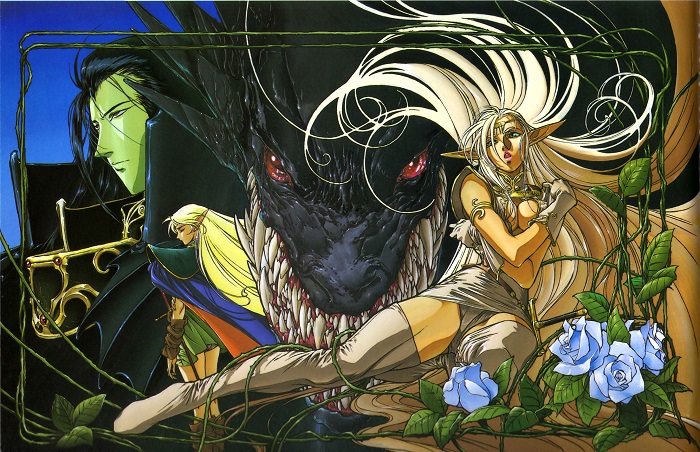Archaic words evolve different meanings as time passes. “Nice” used to mean “silly, foolish, and simple”, but now, it means “attractive, enjoyable, and pleasant”. Literature also works in a similar way, especially light novels which developed largely since the foundation of the term.
The development of light novels
Light novels, in general, are a subculture of Japanese literature for young adults. However, the specific definition has not yet been defined since they contain a lot of different properties. For example, Japanese literary critic Aki Enomoto defines light novels as “entertaining literary work for readers in junior high school or high school”, while the Nikkei Business Publications, a publishing house, defines them as “Books using anime pictures as covers and aimed for young readers.” Others, such as the public, have only a vague sense for the term, considering light novels as a small and light book with an anime cover. However, this is a huge stereotype since light novels can actually be as thick and long as an entire Harry Potter series. For example, “Horizon in the Middle of Nowhere” is an example of how light novels can also become heavy. Even now, people still have different perspectives on the meaning of light novels.
The foundation of the term “light novel” dates back to 1977 when Japanese literature started to diversify. At the time, Japanese author Motoko Arai’s published first-person novels that were written for youths. The novels’ contents were appealing to young readers, and the descriptive words were written in slang. Although there were other authors, such as Saeko Himuro, who possessed or developed similar writing styles, Arai was considered the originator.
Later on, light novels started to develop different styles. For example, “Record of Lodoss War” and “Slayers” published in 1988, were the origins of modern fantasy light novels. They also contributed to the development of fantasy games in Japan such as the Final Fantasy series. During this period, most light novels focused on fantasy themes, which fostered the growth of this kind of literature.
Until 2000, light novel popularity continued to grow, and more kinds of light novels came out, becoming more relevant to the light novels we know now. The most famous one during this time was “Haruhi Suzumiya” which won the 2003 Kadokawa Sneaker Bunko, the award granted to the best light novel of the year by the Kadokawa Corporation. The fame of the novel comes from its complex world settings and charisma of the characters. Most light novels with such complicated settings make readers confused, but Nagaru Tanigawa, the author of “Haruhi Suzumiya”, managed to convey the background in the way that motivates readers’ will to read the book. Even now, “Haruhi Suzumiya” is still considered as one of the foremost light novels in the industry.
There is also a trend of light novel titles getting longer and longer, with some almost reaching the length of a sentence, or even becoming a complete sentence. There are three main reasons why this technique worked out. First, the title educates the readers about the traits of the main characters, which attracts readers’ attention. Then, similar to the first reason, the title summarizes the plot: a good title is worth a thousand words. Finally, when the title is so long even the cover of the book cannot hold it, the readers will be curious to find out what is inside. This practice can be annoying for readers because when readers want to reference the book, the lengthy title makes the process inconvenient. However, since there are popular acronyms for each novel, most readers are not offended by it, leading to more authors using this technique.
Currently, light novels mostly have specific patterns of plots and titles. For instance, those writing about fantasies can be categorized into two kinds: one where the protagonist dies accidentally in the original world and is reincarnated into another world and one where the settings are based on a fantasy world. This caused a flood of light novels to be based on similar stories, resulting in only the most outstanding ones of each type getting published. There will definitely be more kinds of plots in the future, but what is left to be written relies heavily on the author’s creativity.
Merchandise
Light novels have been revised into comics and anime since the 1980s due to the fact that transforming into another form of product on a large scale increase the fame of the novels. Often only the best light novels are revised into comics or anime since it costs a lot to direct, draw, and edit these novels. Sometimes when light novels that are not as famous are revised, tragedies happen.
Take two recent animes as examples. “That Time I Got Reincarnated as a Slime” is a famous light novel with over 12 million views on the Internet. “My Sister, My Writer”, on the other hand, does not have as much fame. Both novels were developed into anime last fall, but with two completely different results. The former became one of the most stable anime in terms of quality, while the latter overcame “Magical Warfare” and became the worst production of anime in anime history. This difference in fame from the start caused the funding for making them be different, which subsequently created a gap in their quality.
Now, there is a pattern in the industry in which the light novels are first converted into comics and then revised into anime. These different forms created what is called the ACG, or Anime, Comic, and Games, world. Lots of conventions, such as the Comic Exhibition and the Comic World in Taiwan or the Comic Market in Japan, are held around the world every year to promote the industry. These all contribute to the development of light novels today.
The light novel industry has developed very much since the foundation of the term. As more people start to accept this kind of literature, the industry will grow every year. Light novels have a unique future and will be considered as a type of literature in the future.





0 Comments
Trackbacks/Pingbacks